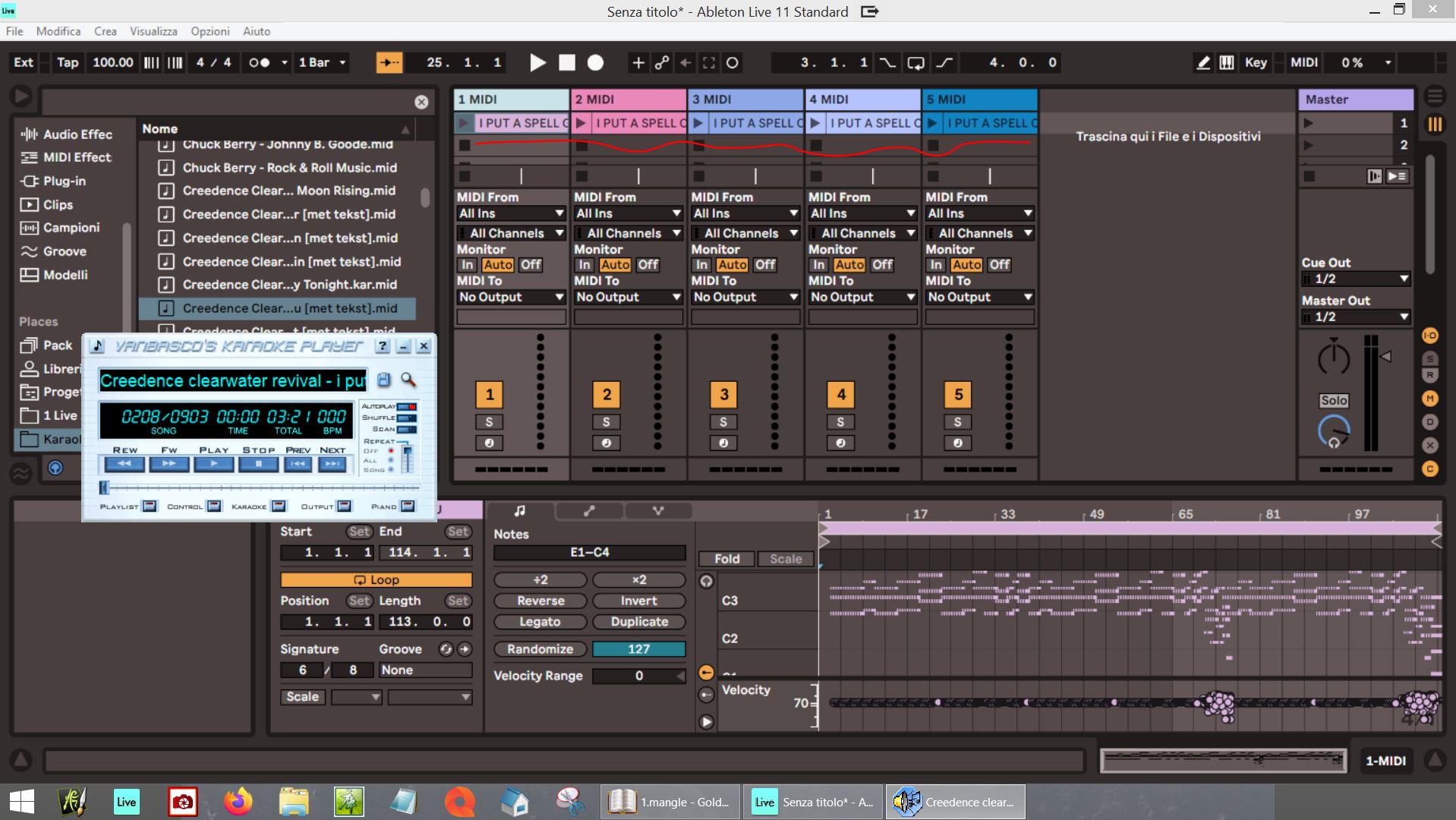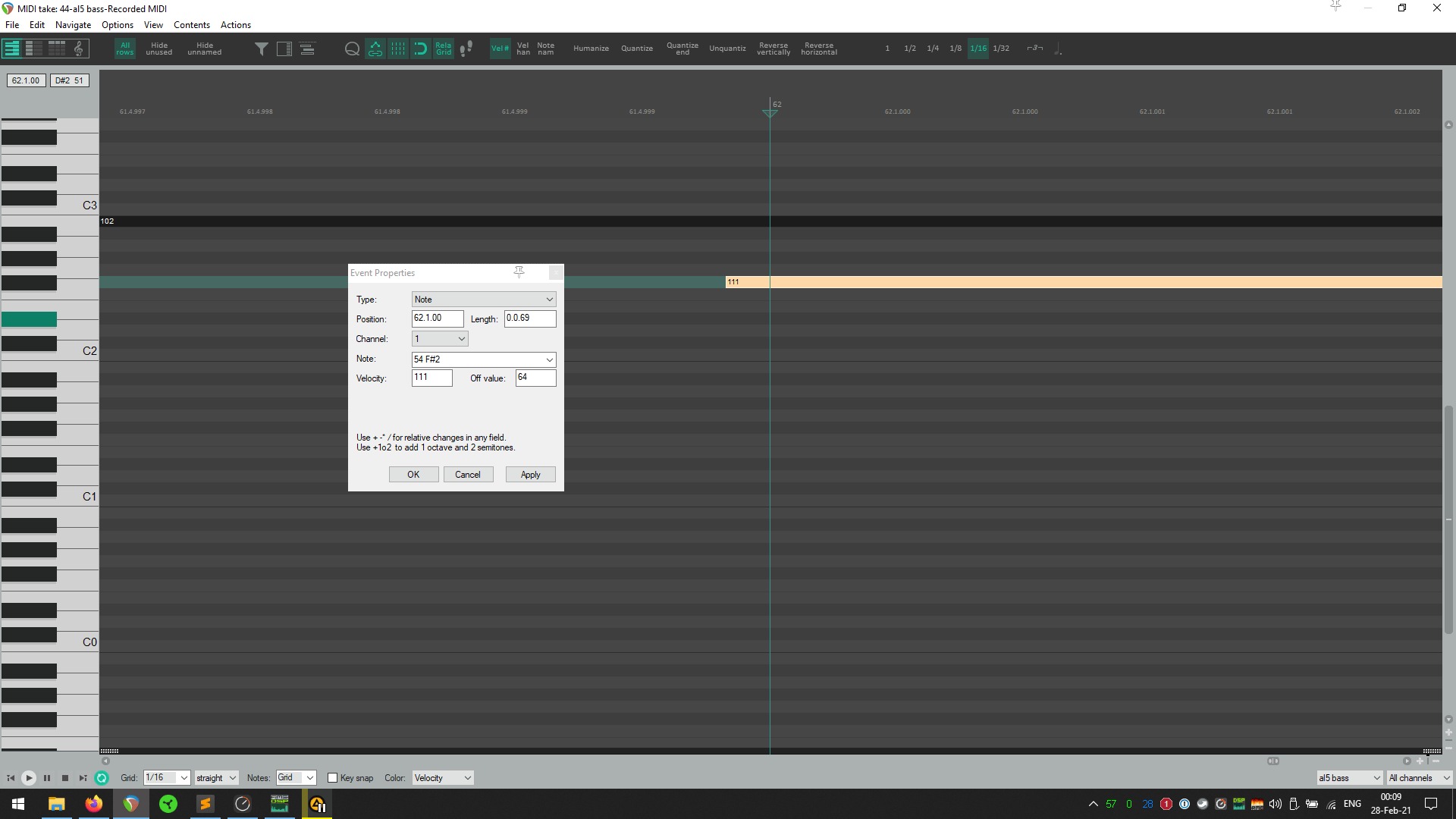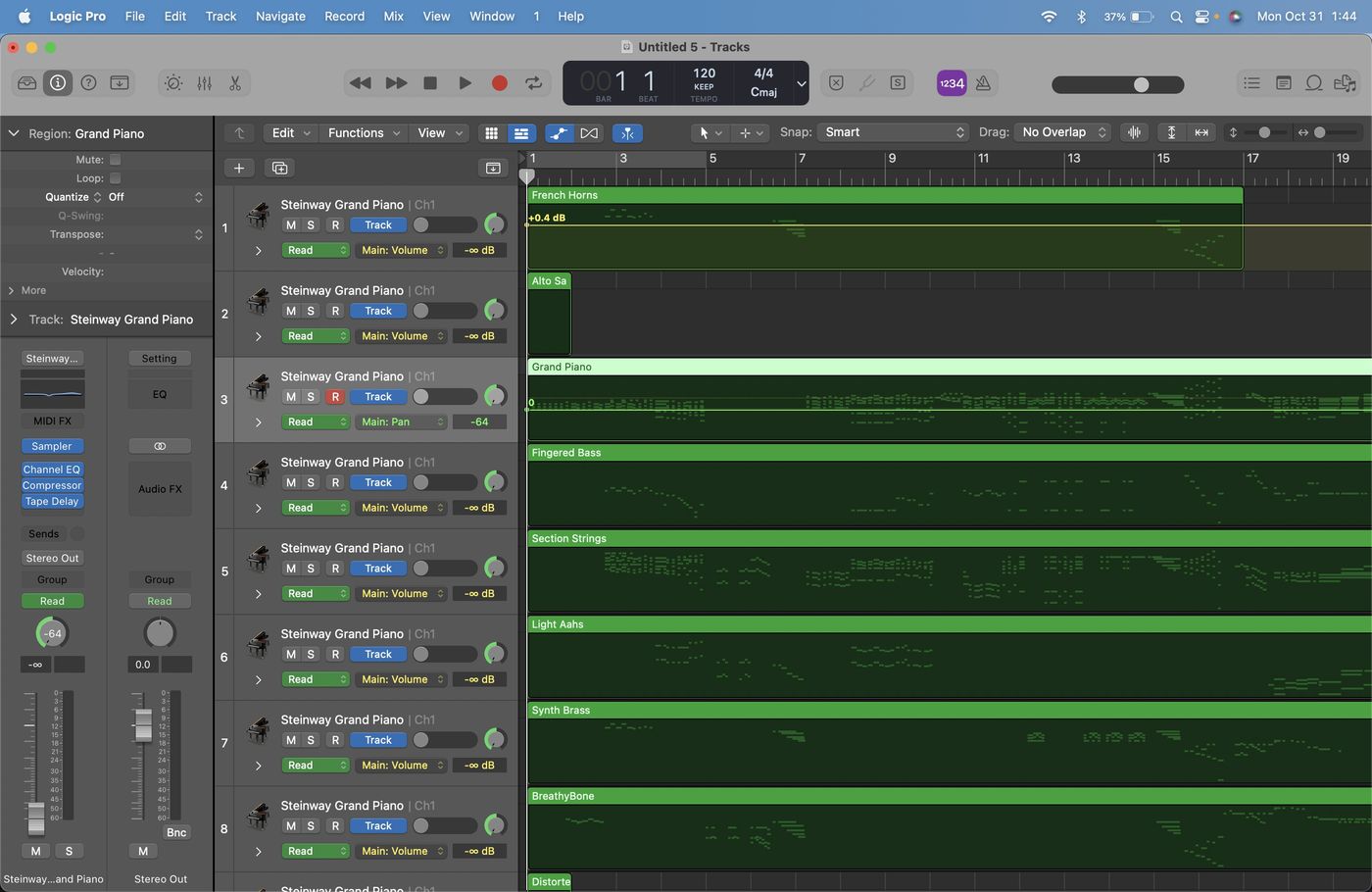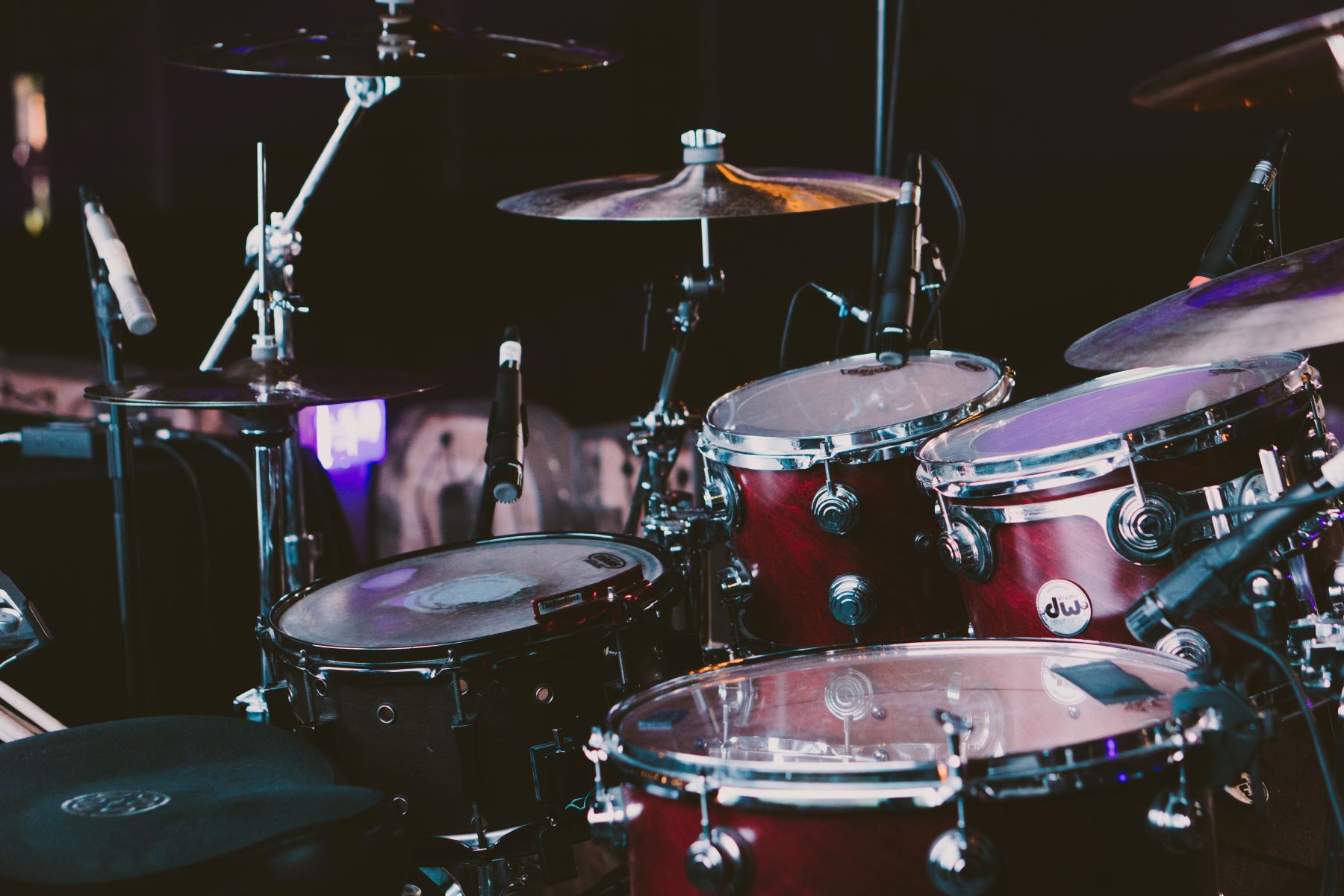Home>Production & Technology>MIDI>How To Make MIDI Sound More Realistic
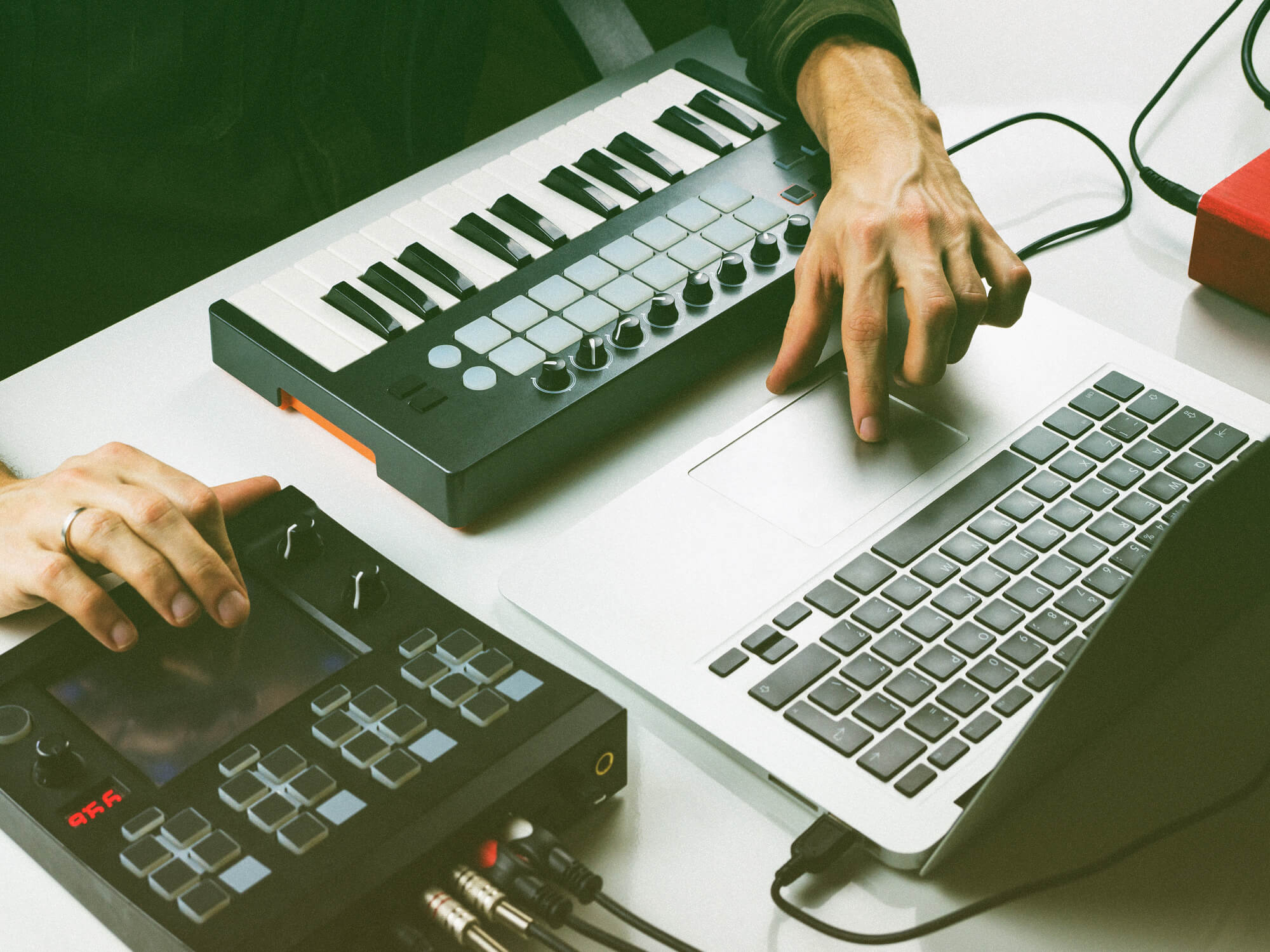

MIDI
How To Make MIDI Sound More Realistic
Published: February 20, 2024
Learn how to make MIDI sound more realistic with expert tips and techniques. Enhance your music production and bring your MIDI compositions to life.
(Many of the links in this article redirect to a specific reviewed product. Your purchase of these products through affiliate links helps to generate commission for AudioLover.com, at no extra cost. Learn more)
Table of Contents
Introduction
Creating realistic-sounding music with MIDI instruments is a common challenge for many musicians and producers. While MIDI technology offers incredible flexibility and convenience, the resulting sound can sometimes lack the natural nuances and expressiveness of live performances. However, with the right techniques and tools, it's possible to breathe life into MIDI music and make it sound remarkably realistic.
In this comprehensive guide, we will explore various strategies and tips for enhancing the realism of MIDI instruments. From choosing the right instruments to utilizing velocity, modulation, and humanization techniques, we will delve into the intricacies of producing authentic and expressive MIDI music. Additionally, we will discuss the importance of incorporating realistic articulations, using effects and processing, and leveraging expression and dynamics to elevate the quality of MIDI performances.
Whether you're a seasoned music producer or a budding musician, this guide will equip you with the knowledge and skills to infuse your MIDI compositions with a lifelike quality that captivates listeners. So, let's embark on this journey to unlock the secrets of making MIDI sound more realistic and breathe new life into your musical creations.
Choosing the Right MIDI Instruments
The foundation of creating realistic MIDI music lies in selecting the appropriate virtual instruments. When choosing MIDI instruments, it's essential to consider the specific characteristics and nuances of each instrument to ensure they align with the desired musical expression. Here are some key factors to consider when selecting MIDI instruments:
-
Sample Quality: Opt for high-quality sample libraries that accurately capture the timbre, tonal variations, and subtleties of real instruments. Look for samples that offer multi-velocity layers and round-robin variations to emulate the natural dynamics and imperfections of live performances.
-
Expressive Capabilities: Choose MIDI instruments that provide extensive expressive control, including features such as realistic legato transitions, dynamic articulations, and responsive modulation. This allows for greater flexibility in shaping the musical phrasing and dynamics, leading to a more authentic performance.
-
Realism and Authenticity: Seek out MIDI instruments that are meticulously crafted to replicate the nuances of acoustic and orchestral instruments. Instruments with detailed scripting and performance algorithms can emulate the idiosyncrasies of live playing, such as string finger noises, breath sounds in wind instruments, and realistic bowing techniques in string instruments.
-
Instrument Combination: Consider how different MIDI instruments complement each other within a musical arrangement. By carefully selecting instrument combinations and orchestrations, you can create a cohesive and convincing ensemble sound that mirrors the richness and depth of live instrumental performances.
-
Genre and Style Considerations: Tailor your choice of MIDI instruments to suit the specific genre and musical style you are aiming to capture. Different genres may require distinct instrument timbres, playing techniques, and sonic characteristics, so it's important to select instruments that align with the stylistic demands of the composition.
By meticulously selecting MIDI instruments that possess high sample quality, expressive capabilities, realism, and authenticity while considering instrument combinations and genre-specific considerations, you can lay a strong foundation for crafting realistic and evocative MIDI music. The careful curation of MIDI instruments sets the stage for the subsequent stages of the production process, allowing for greater creative freedom and expressive potential in bringing MIDI compositions to life.
Using Velocity and Modulation
Velocity and modulation are pivotal elements in shaping the expressiveness and realism of MIDI performances. Understanding how to effectively harness these parameters can significantly elevate the authenticity of virtual instrument articulations and dynamics.
Velocity: The Key to Dynamic Expression
Velocity, often associated with the force with which a key is struck on a keyboard or a pad is triggered, plays a crucial role in emulating the dynamic nuances of acoustic instruments. In MIDI sequencing, velocity values determine the volume and intensity of individual notes, reflecting the variations in a performer's touch and articulation. To imbue MIDI performances with realism, it's essential to manipulate velocity in a nuanced manner:
-
Dynamic Range: Utilize a wide range of velocity values to emulate the natural dynamics of acoustic instruments. Varying the velocity of notes within a passage can mimic the subtle ebb and flow of a live performance, adding depth and expressiveness to the music.
-
Articulation and Phrasing: Adjusting velocity values can simulate the nuanced articulations and phrasing techniques characteristic of different instruments. For instance, higher velocities may evoke a staccato or accented attack, while lower velocities can convey a softer, more legato touch.
-
Humanization: Introduce slight variations in velocity to avoid robotic, machine-like precision. Imperfect timing and subtle inconsistencies in velocity values can impart a human touch to MIDI performances, making them more organic and believable.
Modulation: Infusing Expression and Vibrancy
Modulation parameters, such as pitch bend, modulation wheel, and aftertouch, empower musicians and producers to infuse MIDI performances with expressive gestures and tonal variations akin to live instrumental playing. Leveraging modulation effectively can breathe life into MIDI music:
-
Pitch Bend: Mimic the natural pitch fluctuations and inflections inherent in string and wind instruments by employing pitch bend to introduce subtle pitch variations. This technique can convey the emotive nuances and microtonal shifts that define expressive instrumental performances.
-
Modulation Wheel: Utilize the modulation wheel to introduce vibrato, tremolo, and other tonal modulations that enrich the timbral complexity of MIDI instruments. By manipulating the modulation wheel, performers can emulate the organic fluctuations and embellishments present in acoustic instrument playing.
-
Aftertouch: Harness aftertouch to introduce nuanced changes in volume, timbre, or modulation depth, enabling performers to exert real-time control over the expressiveness and dynamics of MIDI instruments.
By skillfully manipulating velocity and modulation, musicians and producers can imbue MIDI performances with the nuanced expressiveness and dynamic range characteristic of live instrumental playing. These techniques empower creators to craft emotive and realistic musical expressions, bridging the gap between virtual instruments and live performances.
Adding Humanization
Adding humanization to MIDI performances is a pivotal step in infusing virtual instruments with the organic nuances and imperfections inherent in live musical expressions. Humanization techniques aim to mitigate the inherent mechanical precision of MIDI sequencing, introducing subtle variations and irregularities that emulate the idiosyncrasies of human performance. By incorporating humanization, MIDI music can transcend its artificial origins, resonating with authenticity and emotional depth.
Timing Variations
Introducing subtle timing variations is a fundamental aspect of humanizing MIDI performances. Human musicians rarely adhere to metronomic precision, exhibiting nuanced fluctuations in timing that lend a natural ebb and flow to their playing. By slightly adjusting the timing of individual notes and phrases, creators can emulate the organic rhythmic deviations observed in live performances, imparting a sense of fluidity and human touch to MIDI music.
Note Velocity and Dynamics
Human performers exhibit inherent inconsistencies in note velocities and dynamics, contributing to the expressive richness of their playing. By introducing subtle variations in note velocities, particularly in repetitive passages, MIDI performances can avoid the robotic uniformity that often plagues sequenced music. Moreover, manipulating dynamics through velocity scaling and modulation can mimic the nuanced expressiveness and dynamic range characteristic of live instrumental performances, adding depth and emotion to MIDI compositions.
Imperfections and Articulations
Embracing imperfections and idiosyncratic articulations is integral to humanizing MIDI music. Incorporating imperceptible pitch variations, subtle pitch bends, and microtonal fluctuations can emulate the organic nuances present in live instrumental playing. Additionally, integrating realistic articulations such as string squeaks, breath sounds, and fret noises can further enhance the authenticity of MIDI performances, capturing the subtle intricacies that define human musical expression.
Randomization and Variation
Applying randomization and variation techniques to MIDI parameters, such as pitch, timing, and velocity, can introduce organic irregularities that mirror the unpredictability of live performances. By subtly altering the pitch, timing, and velocity of individual notes, creators can infuse MIDI music with a sense of spontaneity and liveliness, diverging from the rigid predictability of quantized sequences.
By embracing these humanization techniques, creators can transcend the mechanical confines of MIDI sequencing, imbuing virtual instruments with the warmth, expressiveness, and imperfections that define human musical performances. Humanized MIDI music resonates with emotional authenticity, captivating listeners with its organic dynamism and lifelike qualities.
Utilizing Expression and Dynamics
In the realm of MIDI music production, the art of utilizing expression and dynamics holds the key to imbuing virtual instruments with a lifelike quality that mirrors the nuances of live performances. Expression and dynamics play a pivotal role in shaping the emotive depth, tonal variations, and dynamic range of MIDI music, allowing creators to infuse their compositions with a sense of organic vitality and emotional resonance.
Dynamic Modulation and Articulation
The manipulation of expression and dynamics encompasses a spectrum of techniques aimed at sculpting the tonal and dynamic characteristics of MIDI performances. Leveraging dynamic modulation tools, such as MIDI continuous controllers and automation, empowers creators to shape the evolving intensity, timbral variations, and sonic textures within their compositions. By meticulously controlling parameters such as volume, timbre, and tonal coloration, musicians and producers can emulate the nuanced crescendos, diminuendos, and tonal shifts inherent in live instrumental playing. Moreover, the judicious use of articulation techniques, such as legato, staccato, and accentuation, enables performers to imbue MIDI music with the expressive phrasing and nuanced articulations that define compelling musical performances.
Velocity Scaling and Dynamic Layering
The strategic application of velocity scaling and dynamic layering techniques enriches MIDI performances with a sense of depth, expressiveness, and realism. Velocity scaling allows creators to map velocity values to specific parameters, such as volume, timbre, or filter cutoff, enabling dynamic control over the sonic characteristics of virtual instruments. By modulating these parameters in response to varying velocity levels, performers can emulate the natural tonal variations and dynamic nuances present in live instrumental performances. Additionally, dynamic layering involves the integration of multiple velocity layers and articulations within virtual instruments, facilitating responsive and nuanced playback that mirrors the expressive range and timbral complexity of acoustic instruments.
Real-time Control and Performance Gestures
The integration of real-time control mechanisms, such as MIDI expression pedals, breath controllers, and touch-sensitive interfaces, empowers performers to exert dynamic and expressive gestures that transcend the limitations of static MIDI sequences. By manipulating these control interfaces, musicians can introduce subtle tonal modulations, dynamic swells, and expressive flourishes that imbue MIDI performances with a sense of spontaneity and organic fluidity. The ability to infuse MIDI music with real-time performance gestures and expressive nuances bridges the gap between virtual instruments and live instrumental playing, elevating the authenticity and emotional impact of MIDI compositions.
In essence, the strategic utilization of expression and dynamics in MIDI music production enables creators to craft performances that resonate with emotive depth, tonal richness, and dynamic expressiveness. By harnessing dynamic modulation, velocity scaling, and real-time control mechanisms, musicians and producers can transcend the confines of static MIDI sequences, breathing life into their compositions and captivating listeners with the organic vitality and emotional resonance of their music.
Incorporating Realistic Articulations
In the realm of MIDI music production, the incorporation of realistic articulations stands as a pivotal endeavor in elevating the authenticity and expressiveness of virtual instrument performances. Realistic articulations encompass a diverse array of playing techniques, tonal nuances, and expressive gestures that mirror the idiosyncrasies of live instrumental playing, enabling creators to imbue MIDI music with a lifelike quality that captivates listeners.
Emulating Instrument-Specific Techniques
Realistic articulations encompass instrument-specific playing techniques and nuances that define the expressive character of acoustic instruments. By meticulously replicating techniques such as hammer-ons, pull-offs, and slides in guitar performances, or incorporating bowing variations, tremolo, and pizzicato in string instrument articulations, creators can emulate the nuanced playing styles and tonal inflections characteristic of live instrumental performances. Moreover, the integration of instrument-specific articulations, such as mutes, trills, and glissandos, enables virtual instruments to convey the rich timbral complexity and expressive depth inherent in acoustic playing, enriching MIDI compositions with a sense of authenticity and musical nuance.
Dynamic Expression and Phrasing
Realistic articulations play a pivotal role in shaping the dynamic expression and phrasing of MIDI performances, allowing creators to imbue their compositions with emotive depth and expressive nuance. By incorporating techniques such as legato, portamento, and vibrato, performers can infuse MIDI music with the fluid melodic transitions, tonal embellishments, and expressive vibrancy characteristic of live instrumental playing. Moreover, the judicious use of dynamic articulations, such as crescendos, decrescendos, and expressive swells, empowers musicians to shape the evolving intensity and tonal variations within their compositions, capturing the organic dynamism and emotive resonance of live performances.
Expressive Orchestration and Ensemble Playing
Incorporating realistic articulations extends beyond individual instrument performances, encompassing the orchestration and ensemble playing techniques that define cohesive and convincing musical arrangements. By orchestrating instrument sections with authentic articulations, such as brass flutter-tonguing, woodwind trills, and string harmonics, creators can craft ensemble performances that resonate with sonic richness and expressive cohesion. Furthermore, integrating ensemble-specific articulations, such as divisi, unison, and polyphonic playing techniques, enables MIDI compositions to capture the intricate interplay and dynamic interactions characteristic of live ensemble performances, elevating the sonic depth and expressive complexity of the music.
In essence, the incorporation of realistic articulations empowers creators to infuse MIDI music with the nuanced playing techniques, dynamic expression, and expressive depth that define compelling live instrumental performances. By meticulously replicating instrument-specific nuances, shaping dynamic phrasing, and orchestrating ensemble articulations, musicians and producers can craft MIDI compositions that resonate with authenticity, emotive resonance, and expressive vitality, captivating listeners with the lifelike quality and organic dynamism of their music.
Using Effects and Processing
In the realm of MIDI music production, the strategic application of effects and processing techniques serves as a transformative force, imbuing virtual instruments with sonic depth, spatial richness, and tonal complexity. By leveraging a diverse array of effects and processing tools, musicians and producers can sculpt the sonic characteristics of MIDI performances, shaping their timbral nuances, spatial imaging, and dynamic expressiveness to evoke a sense of immersive realism and sonic artistry.
Spatial Ambiance and Reverb
Spatial ambiance and reverb play a pivotal role in creating a sense of acoustic space and environmental depth within MIDI compositions. By judiciously applying reverberation and spatial processing, creators can emulate the natural acoustics of diverse environments, ranging from intimate chambers to expansive concert halls. Tailoring the reverb parameters, such as decay time, pre-delay, and diffusion, allows for the creation of immersive sonic landscapes that envelop the listener, enhancing the perceived realism and spatial authenticity of MIDI performances.
Dynamic Processing and Compression
Dynamic processing and compression techniques enable creators to shape the dynamic range, tonal balance, and sonic cohesion of MIDI instruments. By employing dynamic processors and multiband compressors, musicians can refine the transient response, tonal dynamics, and spectral balance of virtual instruments, ensuring a controlled and cohesive sonic output. Moreover, the strategic application of dynamic processing facilitates the emulation of the nuanced tonal variations and dynamic expressiveness inherent in live instrumental performances, elevating the realism and sonic fidelity of MIDI music.
Tonal Shaping and Equalization
Tonal shaping and equalization serve as fundamental tools in refining the sonic character and tonal balance of MIDI compositions. Through the precise manipulation of frequency bands, harmonic resonance, and tonal coloration, creators can sculpt the timbral nuances and sonic clarity of virtual instruments. Employing parametric equalizers, spectral analyzers, and harmonic exciters enables musicians to tailor the tonal characteristics of MIDI performances, enhancing their sonic richness, tonal depth, and expressive clarity.
Modulation and Time-Based Effects
Modulation and time-based effects, such as chorus, flanger, and delay, introduce expressive tonal modulations and temporal embellishments that enrich the sonic palette of MIDI compositions. By integrating these effects, performers can infuse virtual instruments with spatial movement, tonal animation, and dynamic texture, adding a sense of organic vibrancy and sonic depth to their music. Furthermore, the judicious application of modulation and time-based effects facilitates the emulation of the natural tonal fluctuations and expressive nuances characteristic of live instrumental playing, enhancing the emotive resonance and sonic expressiveness of MIDI performances.
In essence, the strategic utilization of effects and processing techniques empowers creators to transcend the confines of static MIDI sequences, elevating their compositions to new heights of sonic artistry and expressive depth. By sculpting spatial ambiance, refining tonal balance, and infusing dynamic expressiveness, musicians and producers can craft MIDI music that resonates with immersive realism, sonic vitality, and emotive resonance, captivating listeners with its lifelike quality and sonic artistry.
Conclusion
In the realm of music production, the quest for realism and expressiveness in MIDI performances is a journey marked by creativity, innovation, and technical finesse. As we traverse the intricacies of crafting lifelike MIDI music, we uncover a tapestry of techniques and strategies that elevate virtual instruments to new heights of sonic artistry and emotive resonance.
From the meticulous selection of high-quality MIDI instruments to the nuanced manipulation of velocity, modulation, and humanization, we have delved into the art of infusing MIDI music with the organic dynamism and expressive depth characteristic of live instrumental performances. The strategic utilization of expression, dynamics, and realistic articulations has enabled creators to shape MIDI compositions that resonate with emotive authenticity, tonal richness, and dynamic expressiveness, transcending the boundaries of static sequences to evoke a sense of immersive realism and sonic vitality.
Furthermore, the transformative power of effects and processing techniques has enriched MIDI performances with spatial depth, tonal clarity, and dynamic cohesion, imbuing virtual instruments with sonic depth and tonal complexity that captivates listeners with its lifelike quality and sonic artistry.
As we conclude this journey of unraveling the secrets of making MIDI sound more realistic, it becomes evident that the convergence of technical prowess and creative intuition is the cornerstone of crafting MIDI music that resonates with authenticity, expressiveness, and emotive resonance. By embracing the nuances of human performance, the sonic intricacies of virtual instruments, and the transformative potential of effects and processing, creators can breathe life into MIDI compositions, transporting listeners into a realm of sonic artistry and emotive depth.
In the ever-evolving landscape of music production, the pursuit of realism and expressiveness in MIDI music remains an enduring endeavor, fueled by the passion and ingenuity of creators who seek to craft compositions that transcend the confines of technology, resonating with the timeless essence of human musical expression. As we continue to explore the boundless possibilities of MIDI music, let us embark on this journey with an unwavering commitment to infusing our compositions with the warmth, vitality, and emotive resonance that define the timeless allure of live instrumental performances.

